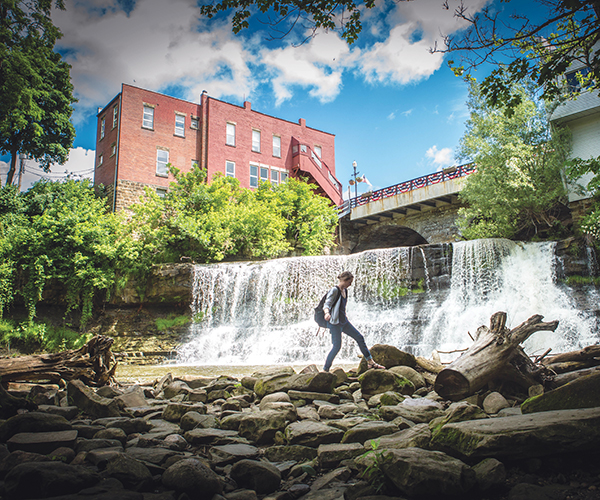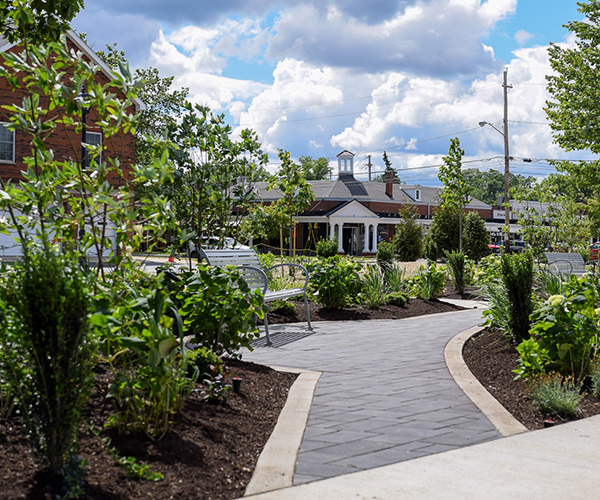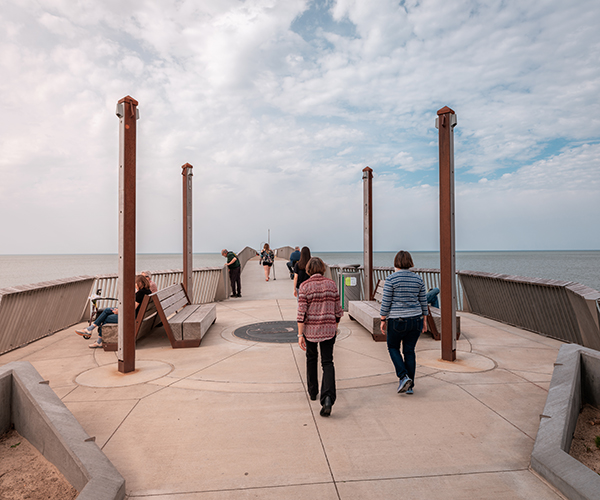Local hangouts tell a lot about a city. Inside Station 43, a restaurant run by Solon firefighters, a dinner crowd sits around tables beside walls of old photos. The buildings pictured show the way Solon used to be. Laughter fills the air as families recount the evening’s high school softball game, others talk about their day at work while some joke with their waiter (an off-duty firefighter). The mood is light and laid-back. And even if you don’t live in Solon, you feel right at home.
It’s evident this is a welcoming city proud of its heritage and its future. The old city hall has been converted into the Solon Center for the Arts. The Solon Gazebo, built in 1910, stands proudly downtown. New developments are sprinkled between streets of older homes.
Change has not outstripped tradition.
The city of more than 22,000 — including former Browns player Bob Golic, WMJI’s Jimmy Malone and Cleveland Cavaliers sports analyst Austin Carr — has been in our Top 15 since 2002, reaching as high as No. 3 in 2004. And this year, it’s our No. 1 suburb.
“I love Solon so much,” says Jimmy Malone, who eats dinner at the Shanghai Stir Fry & Grill on Aurora Road every Wednesday and claims the Solon Hardware & Tool Rental on Melbury Avenue is the greatest hardware store ever. “I moved here four years ago. I am happy where I am and I have no intention of leaving.”
Solon offers easy access downtown via U.S. Route 422. The Cleveland Metroparks’ South Chagrin Reservation runs through the eastern part of the city’s 19.2 square miles. The town has a variety of home styles to choose from. From million-dollar homes in the gated Signature of Solon community, with backyards overlooking the 18-hole golf course, to colonials and modest ranches near the schools, Solon’s housing market is strong. The median home sale price, which we track to rate a home’s value as an investment, has increased more than 50 percent in the last 10 years and jumped $48,000 since last year.
Give the schools some credit there. The district ranks No. 2 this year after placing first since 2003. And for the second year in a row, the schools have received the highest Performance Index from the Ohio Department of Education among the school districts we survey. Add in high proficiency test scores and 35 extracurriculars and 15 sports at the high school, and you have a solid school system. That’s what attracted Malone. “I moved here for the school system,” he says. “I believe in public schools, and Solon has great schools.”
Even if you’re out of school, there’s always something to do in Solon, with 14 public tennis courts, four basketball courts, 12 baseball/softball diamonds, two sets of indoor and outdoor swimming pools and a skateboarding park. The Fourth of July fireworks display draws hundreds of people from neighboring communities. There’s even a rock-climbing wall inside the community center.
The economy keeps growing, too. Food giant Nestlé FoodService has created a 67,000-square-foot Culinary Innovation Center. Nestlé’s “new industry standard” combines concept development, culinary kitchens, design laboratories and test-model manufacturing at its prepared food headquarters. And Swagelok, the city’s largest employer with more than 2,400 jobs, is finishing a $22 million distribution center.
There’s also plenty of destination shopping in Solon. The Shoppes of Solon North, a 111,150-square-foot retail and office campus developed by local builder Kertes Enterprises, will open the first two of five buildings this month with tenants The Fussy Cleaners, Dippin’ Dots’ first Northeast Ohio store, a Math Monkey Knowledge Center, Key Bank, St. Raphael’s Organic Wraps and More, a nail salon and a beauty salon. Other shops include the popular Mustard Seed Market, filled with locally grown produce and organic foods; the only Talbot’s Outlet Store in Northeast Ohio; the Miles Farmers Market, a locally owned grocery store open since 1971; and the Stouffer’s Thrift Store, filled with discounted frozen entrées and more.
More proof that Solon residents value their city: After nearly 1,000 homes suffered flood damage in 2006, taxpayers will pay $4 million this year for stream and storm sewer repairs to prevent future damage. And the city can only get better — a new plan is in development, including a new fire station, that will change the entire look of the center of town.
But what really stands out for Malone as well as other residents is the diversity. “You can walk down the street and see white, black, Hispanic and Asian,” Malone says. “That’s the kind of neighborhood I want my daughter growing up in.”



